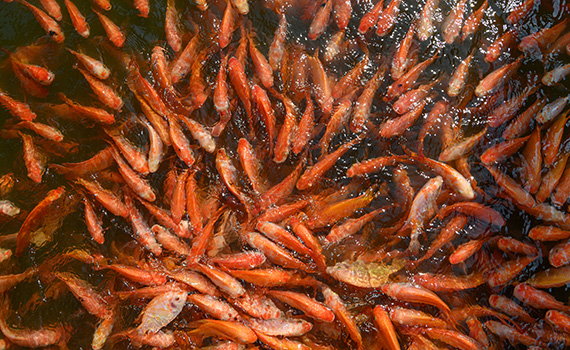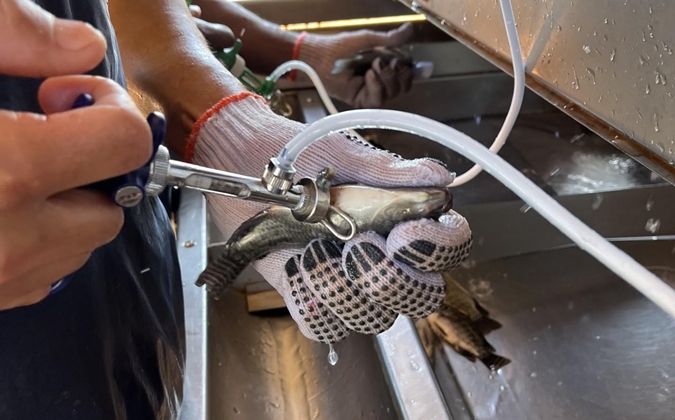
Prioritizing biosecurity can help tame tilapia lake virus
Tilapia lake virus (TiLV) is an emerging threat to tilapia aquaculture, with mortalities in some cases up to 90%. But with a focus on biosecurity, the impact can be considerably lessened, says Win Surachetpong, DVM, PhD, of Kasetsart University.
“Biosecurity is a key consideration for TiLV control. Most importantly, you need to control the fish movement, as we know that live fish are a main source that will transmit the disease between one site and another, maybe from hatchery to the grow-out and also country to country as well. We need to check whether the fish are infected with the virus before they are moved to another part.”
Tilapia behaviors influence transmission
Based on observations in Thailand and elsewhere, Surachetpong’s team published a paper in 2020 on how the virus causes disease outbreaks.1
Horizontal and vertical transmission both play a role in infections, he explained at a Food and Agriculture Organization of the United Nations seminar on tilapia health. TiLV infects fish through the mouth and gills and is shed via the mucus. With the fish exhibiting a behavior where they eat the dead, without intervention this will likely accelerate transmission once an outbreak begins.
“Once you get hit by the virus you need to remove the sick and dead animals very quickly, because they will disseminate the virus and spread it to the populations. We advise the farmers to do that often; if you get infected you need to try to remove dead fish maybe more than three or four times a day,” he continued.
Disinfectants proven against virus
Disinfecting equipment, trucks and boats coming into farms is also essential, he said, citing work by his team which showed the high efficacy of a number of commonly used disinfectants against the pathogen.2
With workers and those visiting farms a potential source of transmission, access needs to be closely controlled, he continued. Although it is thought that other vector species in the aquatic environment might also play a role in outbreaks, this has yet to be proved from research to date.
Highlighting Thai farms with successful practices, he noted the importance of clear boundaries, surrounding walls and a disinfected water supply. Proper net-cleaning practices and regular disease screening are also essential.
Very strict monitoring of the movement of fish into the hatchery should be a standard practice, he added, with only certified-disease-free fry sold to grow-out farmers.
Risks increase for small producers
With larger producers able to dedicate more resources to biosecurity, disease transmission is a particular risk for small-scale farmers.
“In many parts of the world they process the fish just on the rivers that they grow them in, so the virus will spread into the environment. They also share the environment together…the virus will certainly pass through the rivers and then when it hits the naive populations, then you get the disease,” Surachetpong said.
Avoiding heavy losses due to TiLV is ultimately about understanding the various pathways taken by the virus to enter farms and eliminating as much of the risk as possible, he added, as once the virus has arrived on a farm, it is very difficult to regulate.
1 Surachetpong W, Roy SRK, Nicholson P. Tilapia lake virus: The story so far. J Fish Dis. 2020;43(10):1115-32.
2 Jaemwimol P, Sirikanchana K, Tattiyapong P, Mongkolsuk S, Surachetpong W. Virucidal effects of common disinfectants against tilapia lake virus. J Fish Dis. 2019;42(10):1383-9.
Posted on: January 07, 2022






